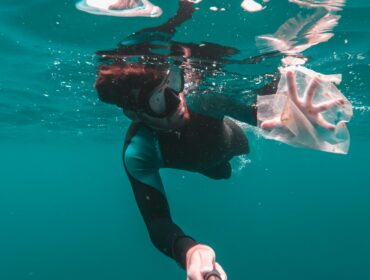Sharks are deservedly getting more attention than just the summer thrill of the Discovery Channel’s Shark Week, and it’s important that people keep talking about them if we intend to preserve them. The controversy raging over the increasing bans worldwide of the possession, sale, consumption, and fishing of (primarily) shark fins and other shark products alleges that the movement is discriminatory of Asian cultures where shark fin soup has been a tradition for hundreds of years, while proponents of the bans entreat them to look at the bigger picture and realize their imperative presence in our oceans.
The current estimate of sharks killed annually is hovering at 26-73 million, a number that is highly unreliable due to the lack of regulation in many countries, as well as the black market trade. The number has been as low as 10 million, reported by the United Nations, and as high as 100 million, compiled from various other sources globally. Scientists reached this broad estimate by using records from fin auctions from Hong Kong, which is the world’s largest trading hub for shark fins. The resulting study was the only one of its kind, published in 2006, that quantified the amount of sharks that were ending up in the fin trade, with a mean average of 38 million sharks per year.
It’s easy for people who don’t live in or have never even visited coastal areas to take an ambivalent stance on the subject of shark conservation, as the effects of it are not readily noticeable to landlocked people, but many studies have been conducted that show the negative effects of shark depletion on an ecosystem. Because ecosystems are all inextricably linked to one another, the loss will not be immediate, but eventually aspects of our lives that we would never equate to healthy ocean ecosystems packed with apex predators begin to suffer.
One significant example of this is the North Carolina scallop industry, who suffered a devastating blow when an abundance of stingrays razed valuable scallop and oyster beds to empty shells, indiscriminately feeding on mollusks that have not yet spawned, dashing any hope for a new crop. Guess who enjoys a good stingray now and then? Yep, our buddy the shark. That fishery had flourished for more than a century until the depletion of sharks led to an upset in the balance of a very important ecosystem. Jobs and livelihoods were lost, as well as a viable food source, which begins to affect those who are on the receiving end of the supply chain. A similar scenario played out in Japan where cownose rays destroyed a multi-species shellfish fishery when sharks began disappearing from surrounding waters.
Sharks cull the sick, weak, and injured species of the sea, encouraging the population to remain healthy and reproduce for years to come. Due to the short reproductive cycles of many of the shark’s prey, this culling actually provides a service to prey species, ensuring that only the strong survive. But sharks don’t have that kind of luxury. Because they only reproduce every few years, and just a few pups in their lifetime, the rate at which they are being culled from our oceans is not giving them time to repopulate, and if that rate increases, we could see shark extinction in our lifetime. It would be a shame to know we had the facts and power to prevent it right in our hands, but chose instead to satisfy our fleeting human whims.




